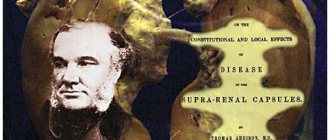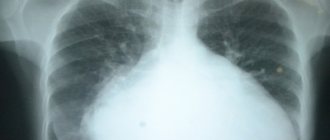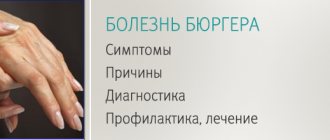Diseases of the heart and vascular system are becoming increasingly common. Moreover, not only elderly and middle-aged people encounter them, but also young people. The feeling of your heart tumbling is a symptom that more and more people are complaining about. If you visit several forums dedicated to pathologies of the heart muscle, you will come across this concept more than once.
Extrasystole - what is it?
This is a representative of the most common heart diseases. The term reflects heart rhythm disturbances when contraction occurs much earlier than that of a healthy muscle. This disease is easy to identify; if there are complaints about the heart tumbling, the patient is sent to an ECG, which shows a premature or rapid rhythm.
Ideally, such a heart problem can be detected even in a healthy person, which means that such a disorder does not require emergency treatment. However, there is a certain norm when the number of extrasystoles is not life-threatening - no more than 200. If it is less, then there is nothing to worry about, and the person is absolutely healthy, because like any other organ, the heart cannot work 100% perfectly.
When a person experiences extrasystole more often and notices some symptoms of tachycardia, this is a reason for an early examination by a doctor. Because behind these symptoms there may be more serious ones that can lead to irreversible consequences.
It is necessary to combat extrasystole in the following cases:
- hemodynamic disorders caused by nervous heart rhythm;
- personal feelings of a person when he realizes that the frequency and evenness of the heartbeat is no longer the same and begins to cause discomfort;
- if during the examination the doctor detects a deterioration in myocardial performance, which in no case should be left without medical intervention.
Clinical picture of the disease
The functional manifestation of extrasystole does not cause concern. Organic tumbling of the heart muscle is considered dangerous. The patient most often complains of intense shocks from inside the chest, turning over of the myocardium in its place, as well as interruptions in the functioning of the main human organ - its periodic freezing.
Only the attending physician can identify the presenting symptoms:
- Increased activity of the sebaceous glands, causing excessive sweating;
- Oxygen starvation of internal organs;
- The occurrence of anxiety of an unreasonable type;
- Severe headaches of an intense nature;
- Frequent dizziness and periodic fainting;
- Manifestation of shortness of breath in a calm state and hot flashes throughout the body.
If any of the symptoms appear, it is recommended to consult a doctor immediately. When diagnosing, a cardiologist will identify the cause of the development of the pathological process and prescribe effective treatment.
When a pathology is detected, it is worth monitoring your own body. Most often, the process occurs imperceptibly to humans. But in some situations, if the heart turns over more than 5 times in 1 minute, this is a cause for concern.
Localization area
This is a rather interesting disease from a medical point of view, because it has several types of location in the heart muscle. Supraventricular is the result of arrhythmia, which is caused by foci of impulses in the heart muscle. They are usually located in the atrioventricular septum or supraventricular region. If a person encounters ventricular localization, it occurs due to the formation in the ventricles of the muscle of an absolutely independent source of contraction of impulses, which interferes with the stable functioning of the heart. This problem is more often encountered by older men.
In fact, the symptoms themselves are not pronounced, but as with other arrhythmic disturbances, there is a feeling of the heart tumbling, freezing or increased rhythm. This form of localization does not pose a threat to life, however, if the indicators are elevated, examination and treatment are necessary.
Atrial appears as a result of the occurrence of foci of electrical impulses in the atria. Atrioventricular is the result of the formation of a focus of pathology in the area of the ventricular-atrial septum.
Heart arythmy
Cardiac arrhythmia is a pathology in which there is a disturbance in the rhythm, frequency and sequence of contraction and excitation of the heart. Patients suffering from heart rhythm problems describe their condition in different ways, but they feel the same thing - first an increased heart rate, then a sinking heart and again a feeling that the heart is about to jump out.
Is arrhythmia dangerous? Types of arrhythmic disorders
There is a set heart rate of 60-80 beats per minute. When this indicator increases, a person develops tachycardia, and when it decreases, bradycardia develops. This is generally called an arrhythmic heartbeat disorder. Arrhythmia itself does not pose a threat to a person’s life, but it can lead to some complications that can negatively affect the functioning of the cardiovascular system and cause the development of a stroke or heart attack.
Some types of arrhythmic disorders ( atrial fibrillation, sinus
) can interfere with the normal blood supply to the heart, and cause its sudden stop.
For example, atrial fibrillation
is the cause of blood stagnation in the atria, and if a person’s body is prone to the formation of blood clots, then there is a high probability of the formation of an embolus, which breaks away from the walls, passes into the blood vessels and blocks blood circulation in the brain, which inevitably leads to either a stroke , or to death.
In addition, atrial fibrillation
negatively affects the heartbeat in general.
If a patient experiences erratic contraction of the fibers of the upper chambers of the heart, this leads to disruption of the ventricular rhythms. Atrial fibrillation
is a serious pathology and can cause diseases such as:
- Cardiac embolic stroke;
- Heart failure;
- Cardiomyopathy;
- Thromboembolism;
- Cardiac asthma;
- Arrhythmogenic shock;
Sinus arrhythmia
There are two types: respiratory - occurs at a young age and non-respiratory - occurs in old age and is determined by the difference between heart contractions, exceeding their average duration by 10%.
With sinus arrhythmia,
the heart rate increases to one hundred or more beats per minute.
It mainly appears after stressful situations, physical overload, taking medications, or is a consequence of some other reason. Tachycardia disorders lead to an accelerated heartbeat, indicating disturbances in vascular tone, and can occur after attacks of angina, anemia, heart attack, as well as with elevated body temperature and increased hormone production. Sinus arrhythmia
is dangerous due to unexpected fainting and dizziness, and when such symptoms become frequent, it is necessary to consult a doctor and undergo a therapeutic course of treatment. And if, with severe shortness of breath, chest pain and darkening of the eyes appear, then you need to immediately undergo a course of examination by a cardiologist, diagnose the disease and strictly follow medical recommendations. It is possible that hospital treatment will be required.
How to treat arrhythmia
To restore normal heart rhythm, doctors prescribe drugs with antiarrhythmic effects. Such drugs are divided into four groups: antiarthmics, beta-blockers, anticoagulants and metabolites.
Anti-arthmics.
To eliminate atrial fibrillation, Adenosine, Verapamil, Digoxin are prescribed from this group of drugs, and Propafenone and Amiodarone are used to treat other types of arrhythmic pathologies. The drug Cordarone has proven itself to be excellent, helping in the treatment of arrhythmia for people with heart failure and post-infarction conditions.
Important!
Cardarone is contraindicated in bradycardia (when the heart rate is reduced to 50 beats per minute), pregnancy, bronchial asthma, heart block and thyroid disease.
Beta blockers.
The drugs Sotalol, Carvedilol, Atenolol, Bisoprolol, Celiprolol and Betaxolol are prescribed when a patient develops coronary heart disease, heart attack, or hypertension. They quickly normalize pressure in blood vessels, lower heart rate and prevent the development of heart failure.
Important!
Drugs of the beta-blocker group are contraindicated for bronchial asthma and disorders of the respiratory function of the body.
Anticoagulants.
For a prolonged period of arrhythmic disorder (several weeks), drugs are prescribed that thin the blood and prevent the formation of blood clots in the atrium - Heparin, Enoxparin and for continuous use - Warfarin.
Metabolites.
This group of drugs increases the nutrition of the heart fibers, prevents pathology that provokes coronary artery disease and helps improve metabolism. Thiotriazolin, Riboxin, Cocarboxylase, Mildronate, Adenosine triphosphate (ATP) and magnesium and potassium preparations are mainly prescribed. Metabolites normalize the conduction of impulses and restore heart function.
In cases where drug treatment does not bring positive results, radiofrequency ablation may be necessary.
During the operation, a small area of heart tissue is cauterized, stimulating impulses that cause heart block.
After this, to maintain a normal heartbeat, the patient is given a pacemaker. Doctors can also offer radiofrequency isolation of the pulmonary veins
. This operation eliminates the focus of increased excitation of the heart, and since this focus is located in the pulmonary veins, its isolation from the atrium reduces the development of arrhythmia by 60%.
To prevent the development of arrhythmic diseases, you should undergo regular examination by a cardiologist.
Causes
Extrasystole is a disease, the causes of which are very similar to those that characterize other cardiac pathologies. Among them:
- lack of potassium in the body;
- smoking;
- malfunctions of the arterial system;
- ischemia;
- problems in the functioning of the myocardium;
- drinking drinks containing caffeine;
- heart defects (acquired or congenital).
Fatigue indicates a lack of blood supply, and weakness indicates the risk of a heart attack.
Let's start with those unclear manifestations that are usually ignored, taking them for moments of weakness. But they are the markers of the disease.
Symptom No. 1. Fatigue. You just got out of bed and already feel overwhelmed. You get to work and are only thinking about how to relax. And you return from it completely exhausted. And every day you feel more and more tiredness accumulating.
- An alarming symptom that indicates heart failure. Fatigue occurs due to lack of blood supply to the brain, lungs and heart.
Symptom No. 2. Weakness. Many patients who suffered a heart attack admitted that shortly before they experienced such weakness that they were unable to hold a sheet of paper in their hands. The feeling of powerlessness that is characteristic of the flu is an alarming signal.
- The symptom indicates the risk of myocardial infarction in the near future.
Symptom No. 3. Mood swings. Many people experienced a feeling of causeless anxiety before ending up in a hospital bed. Doctors advise to be careful about this condition, as it is one of the common symptoms.
- Severe anxiety or even fear of death may indicate an impending heart attack.
Diagnostics
The easiest way to identify the disease is with an electrocardiogram. This type of study guarantees an accurate and easy calculation of the malfunction of the heart muscle, because all abnormal, normal and rapid contractions appear on the tape.
However, it is not always possible to detect extrasystoles using a cardiogram, because the procedure for obtaining a “snapshot of the heart’s work” lasts a short time and it is during this period that the heart can work like a clock. All this is due to the fact that during the ECG the patient is in a supine position, i.e. does not show activity, but in life the person is usually active.
If extrasystole cannot be detected by this method, the patient is prescribed a Holter mount. This method involves monitoring the patient throughout the day, which should take place in his usual way. It is in this way that the doctor will be able to determine the absence or presence of disruptions in the rhythm of muscle work.
So that there is no confusion
As you can see, there are many options, and determining on your own whether heart failure is dangerous is quite problematic. Cardiologists agree on one thing: if you periodically feel heart beats and pauses following them, it is better not to guess, but to go for a consultation with a specialist. This is also important because not everything that is perceived as cardiac arrest is actually extrasystoles. For example, many people often confuse heart pain (which almost always indicates a problem that requires treatment) or intercostal neuralgia with interruptions.
A banal ECG will help eliminate confusion - with frequent extrasystoles, such an examination will be enough to detect them. If fading occurs less frequently or, for example, only in the evening, it makes sense to conduct 24-hour Holter monitoring. A compact device that is attached to the body and records the heart rhythm will give answers to all questions.
Treatment methods
It sounds strange, but such a problem is sometimes treated with just a regular visit to a psychologist or psychiatrist. The essence of the technique is to remove the patient from a depressive or anxious state, which adversely affects the functioning of the heart.
In practice, drug treatment is also carried out. To do this, you will need to see a cardiologist who will prescribe medications:
- to maintain normal production of adrenaline in the blood;
- used for arrhythmia;
- replenishing calcium levels in the body.
And, as always, do not forget about the folk recipe. It is often prescribed by doctors. For example, to treat extrasystole of the heart muscle, you can use the following recipes:
- Make a hawthorn tincture. To do this, you need to fill the hawthorn with water and leave for 10 days. Take the resulting mixture three times a day, 10 drops.
- Valerian tincture is used in a similar way. To prepare it, pour a few teaspoons of the plant with boiling water in a volume of 100 ml and cook for 10 minutes.
If the heart seems to be tumbling and all of the above treatment methods are ineffective, doctors resort to surgery. To do this, a special catheter is taken, with the help of which special impulses are sent by radio frequencies, necessary for the correct heart rhythm.
FacebookvKontakteTwitterWhatsApp
No queue
Usually people who have encountered this problem complain that their heart seems to stop for a few seconds. In some cases, this may be accompanied by a feeling of a heartbeat, a feeling of lack of air. The reason for this extrasystoles is extraordinary heart contractions. An impulse arises in the heart, due to which one beat occurs earlier than necessary, and the next one at its proper time. Accordingly, the pause between contractions lengthens - this causes unpleasant symptoms.
Extrasystole is the most common type of arrhythmia. Extraordinary heart contractions periodically occur in 70–80% of people over 50 years of age. They also happen to young people, including athletes with a trained heart. Because of this, many people think that such rhythm disturbances are harmless. However, this is not quite true. Extrasystole can be caused by various reasons and, accordingly, have different consequences. Based on this, they make a decision about the study.
Prevention, let's support our hearts
A healthy lifestyle is, perhaps, a panacea, if not for all diseases, then for most. But it’s easy to say: a healthy lifestyle, but you have to get used to it, and it’s not so easy. It is impossible to completely rebuild your life in one day. Therefore, let's talk about useful habits, the introduction of which into your daily schedule will benefit your heart and help you forget about problems with it:
- Moderate physical activity: walking, swimming, aqua aerobics. Just remember, your doctor must allow you to exercise. You shouldn’t prescribe them for yourself;
- Quitting bad habits: smoking and alcohol. One glass of good red wine does not count; on the contrary, it can even be useful, but do not overdo it;
- No stress, positive emotions;
- Diet, the fight against obesity, but remember, fasting is contraindicated, you just need to give up unhealthy foods.
- Phototherapy is taking herbal infusions, don’t get carried away and better consult your doctor, but, nevertheless, this method cannot be discounted, herbal infusions can patch up your heart.
Negative effects of drugs
Medicines that cause cardiac arrest are used for treatment. In rare cases, deliberate overdose causes death. This must be proven to the judicial and investigative authorities. When prescribing medications, the doctor takes into account the patient’s age, weight, diagnosis, and warns about a possible reaction and the need to see a doctor again or call an ambulance.
Overdose occurs when:
- non-compliance with the regime (taking pills and alcohol);
- deliberately increasing the dose (“I forgot to drink this morning, so I’ll take two at once”);
- combination with traditional methods of treatment (St. John's wort, shepherd's ears, self-prepared tinctures of lily of the valley, foxglove, adonis);
- carrying out general anesthesia against the background of continuous medication use.
The use of St. John's wort herb should be very limited; its potency is comparable to antitumor cytostatics
The most common causes of cardiac arrest are:
- sleeping pills from the group of barbiturates;
- narcotic drugs for pain relief;
- groups of β-blockers for hypertension;
- medicines from the group of phenothiazines prescribed by a psychiatrist as a sedative;
- tablets or drops of cardiac glycosides, which are used to treat arrhythmias and decompensated heart failure.
It is estimated that 2% of asystole cases are drug related.
Only a specialist can determine which medications have the most optimal indications and have the least accumulation and addiction properties. You should not do this on the advice of friends or on your own.
Main types of cessation of cardiac activity and mechanisms of their development
The causes of cardiac arrest according to the developmental mechanism are hidden in a sharp violation of its functional abilities, especially excitability, automatism and conductivity. The types of cardiac arrest depend on them. Cardiac activity can stop in two ways:
- asystole (in 5% of patients);
- fibrillation (in 90% of cases).
Some scientists insist on identifying electromechanical dissociation as a separate form of cessation of cardiac contractions. In other words, myocardial contractility is preserved, but is not sufficient to ensure the pushing of blood into the vessels.
In this case, there is no pulse and blood pressure, but the following is recorded on the ECG:
- correct contractions with low voltage;
- idioventricular rhythm (from the ventricles);
- loss of activity of the sinus and atrioventricular nodes.
The condition is caused by ineffective electrical activity of the heart.
In addition to hypoxia, impaired electrolyte composition and acidosis, hypovolemia (decreased total blood volume) is important in pathogenesis. Therefore, such signs are more often observed with massive blood loss.
Since the 70s of the last century, the term “obstructive sleep apnea syndrome” has appeared in medicine. Clinically, it was manifested by short-term cessation of breathing and cardiac activity at night.
To date, extensive experience has been accumulated in diagnosing this disease. According to the Research Institute of Cardiology, nocturnal bradycardia was found in 68% of patients with respiratory arrest.
At the same time, a blood test showed severe oxygen starvation.
The device allows you to record respiratory rate and heart rhythm
The picture of heart damage was expressed:
- in 49% - sinoatrial block and pacemaker arrest;
- 27% have ;
- in 19% - blockades with atrial fibrillation;
- in 5% - a combination of different forms of bradyarrhythmias.
The duration of cardiac arrest was recorded as more than 3 seconds (other authors indicate 13 seconds).
Emergency help for the heart
This is all good, but what to do if the attack is severe and it caught you suddenly, and you still have to wait for the doctor. Of course, the first thing is an ambulance, but if you live in a metropolis like Moscow, then you are familiar with the problem of traffic jams. Problems can also arise when the illness finds you outside the city, on vacation, and the nearest medical center is tens of kilometers away, which means you cannot do without self-help.
First, determine your heart rate. If it is high, then cover your nose and mouth with your palms and tense up sharply. Repeat this 2-4 times. Another option: feel the vessel on your neck, it will pulsate frequently, so it’s easy to find, and massage it on one side and the other. You can press on the root of your tongue - this is also a very effective remedy for relieving an attack. Of course, the sharp cold on the face, given our winters, is another accessible and effective technique.
Who is at risk?
It is quite easy to identify people who are at risk, especially after familiarizing yourself with the main reasons. These are the people:
- With congenital heart pathologies;
- With vascular and thyroid disease;
- Women during menopause;
- People with high cholesterol levels;
- Those who are obese;
- Men over 45 years old.
Men are more susceptible to this danger than the fair sex, such is the desire of nature. Perhaps this is due to the fact that boys are taught from childhood to experience all difficulties within themselves, thereby accumulating stress. Plus, the same obesity in women, as is known, thanks to special female hormones, manifests itself in deposits in the thighs, and this is not as dangerous for the heart as the notorious male tummy.
Straight to the heart: swelling of the legs and severe shortness of breath threaten heart attacks
Symptom No. 4. Shortness of breath. If climbing to the third floor causes severe shortness of breath, as if after an hour-long marathon, and minor physical activity is accompanied by a lack of air, it’s time to consult a cardiologist. Shortness of breath often accompanies a heart attack and can cause chest pain.
- Impaired blood flow reduces its supply to the lungs, which causes shortened breathing.
Symptom No. 5. Dizziness. The brain needs plenty of blood flow to function properly. As soon as an insufficient amount of blood enters the brain, this affects the condition of the entire body.
- Heart attacks are accompanied by dizziness or loss of consciousness. Therefore, heart rhythm disturbances are very dangerous.
Symptom No. 6. Cold sweat. It suddenly hits you when you are just sitting in a chair and suddenly begin to become covered in drops, as if you had just spent two hours in the gym.
- An alarming symptom indicating an approaching heart attack.
Symptom No. 7. Rapid pulse . Rare pulse surges, as a rule, do not cause concern to doctors. But an irregular or rapid pulse, especially if it is accompanied by shortness of breath, dizziness, weakness, indicates arrhythmia.
- Arrhythmia can cause a heart attack or even sudden death.
Symptom No. 8. Chest pain appears suddenly and disappears in the same way. It is not surprising that many people ignore such manifestations and do not realize the full danger of the situation. They come to their senses when the affected area extends to the arms, back, and shoulders.
- The most common symptom indicating an impending heart attack.
Symptom No. 9. Swelling. Swelling of the legs, as well as weight gain, are not always a consequence of a sedentary lifestyle (although it certainly is, too). However, the heart can also give alarm signals in a similar way. These include loss of appetite.
- Excess fluid in the body indicates heart failure.








